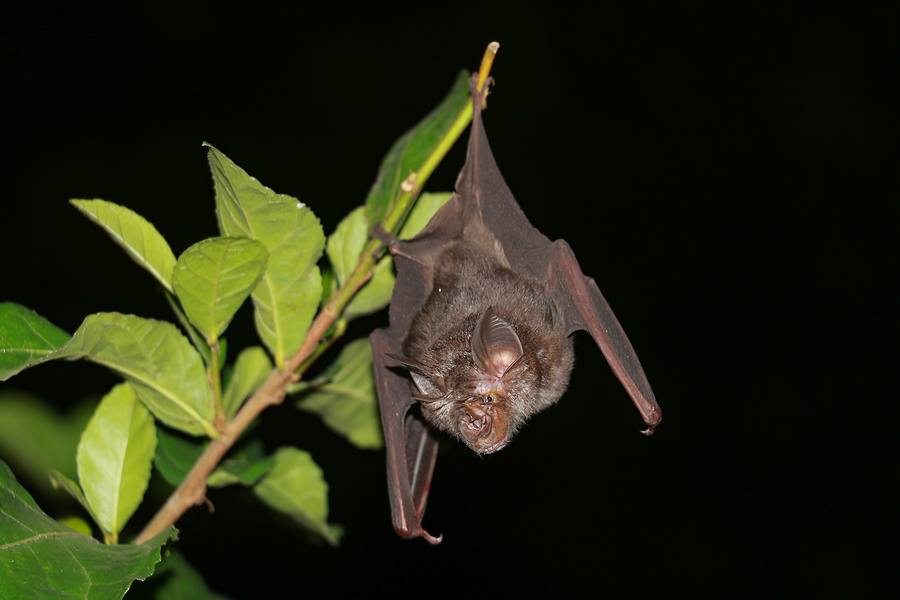Bats are an incredible species. Not only are they found on every single continent on Earth, with the exception of Antarctica, they are also the only mammal capable of true flight. These impressive facts are just the “tip of the tragus” when it comes to bats. There is plenty more to learn and admire about the Chiropteran order. Continue reading to do just that!

Bat Classifications
Animal classification is broken down into Kingdom, Phylum, Class, Order, and Suborder. As for bats, they are part of the Animal Kingdom, the Chordata Phylum, the Mammalia Class, and the Chiroptera Order. When it comes to Suborder, all bats of the world are often categorized into one of two suborders: Microchiroptera and Megachiroptera. Although they are all bats, the two Suborders have several ecological differences between them.
Microchiroptera
The Microchiroptera suborder contains 16 families, and is now more commonly referred to as the Yangochiroptera or Vespertilioniformes suborders, excluding the Rhinopomatidae and Rhinolophidae superfamiles. Its classification can be further broken down into 7 Superfamilies, which consists of Emballonuroidea, Rhinopomatoidea, Rhinolophoidea, Vespertilionoidea, Molossoidea, Nataloidea, and Noctilionoidea.
Colloquially called “microbats”, this suborder is estimated to have around 1,000 species in regions all across the world and mostly characterized by their small size. On average, microbats range between 3 and 6 inches in length. The nuisance bats found in Indiana are microbats. Because they are most-known as Echolocating bats, many people wrongly assume bats are blind. The truth is, they see quite well. To determine an object’s distance, size and shape, they emit pulses of high-frequency sound (20-130 kHz) that bounce off nearby objects, and then use the echoes to navigate the surrounding area. Essentially, it is a built-in sonar system that helps them with their aerial hawking and gleaning tactics for hunting prey.
They are insectivorous, and depending on the species, stick to a diet that consists mostly of insects like flies, mosquitos, mayflies, gnats, dragonflies, grasshoppers, termites, beetles, small wasps, moths, ants, and more. Like many other mammals, they hibernate in the winter, roosting in hollow trees, caves, mines, and buildings. Although a common nuisance, they play an integral role in our ecosystem as excellent pest control.
Megachiroptera
The Megachiroptera suborder is now more commonly referred to as the Yinpterochiroptera suborder, and includes one family (Pteropodidae), and about 166 species. Its classification can be further narrowed into 7 Subfamilies, including Nyctimeninae, Cynopterinae, Harpiyonycterinae, Macroglossinae, Pteropodinae, Rousettinae, and Epomophorinae. Also known as megabats, they maintain nectarivores and frugivorous diets that primarily consist of plant material, such as fruit, nectar, or pollen. They are much larger in size compared to microbats, and do not have Echolocating abilities. Instead, megabats have pronounced visual cortexes, giving them excellent vision, but they also have a great sense of smell that helps them locate food. They live in subtropical and tropical habitats, roosting in trees, shrubs, and sometimes caves. They play an important symbiotic role in the ecosystem by spreading seeds through forests following digestion.
Indianapolis Bat Removal and Control
Sometimes bats can get too close, and give us trouble. If you have nuisance bats, call 317-535-4605 to speak with a friendly and knowledgeable wildlife abatement specialist about bat removal services in Indianapolis, Indiana. Don’t let bats damage your property and cost you thousands of dollars in renovations! Let our DNR licensed and insured bat removal specialists provide the workable solutions you need.

